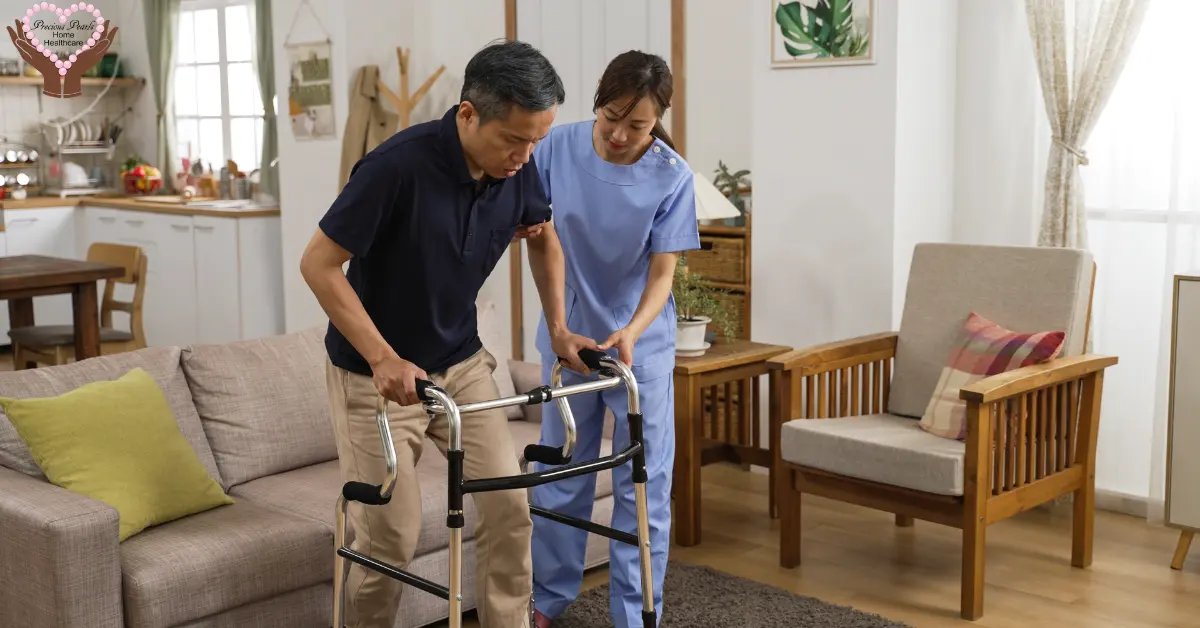One of the challenges of old age is that our loved ones lose the ability to be as mobile as they used to be, an issue that concerns not only the elderly, but all of the family and loved ones who care for them.A simple stumble, a misstep, or the struggle to rise from a chair can become a life-threatening mishap of the frail and older if no one finds them in a timely fashion. That’s because in-home mobility aids for the elderly are so much more than convenient devices –they’re life-sustaining tools that help them retain their independence, safety, and even their dignity.In this guide, we will explore the best mobility aids for elderly at home, helpful suggestions on finding the right aids that are aligned with your specific needs.
Why Mobility Aids Matter for Seniors at Home
The ability to get around within the home affects much more than just ease of mobility, including safety, mental health, and overall quality of life. As we age, our muscle strength, balance, and reflexes diminish, meaning older adults are more susceptible to falls and accidents. The best mobility aids for elderly at home can help you perform everyday tasks easily and live with more confidence.Below, let’s examine some of the most important reasons mobility aids are necessary and the problems they’re meant to remedy.
Common Mobility Challenges Faced by the Elderly
Arthritis, muscle weakness, balance problems, and joint pain are common ailments in the elderly. These problems can make walking, standing or going from bed to bathroom a perilous affair — particularly for people who live alone. Left unchecked, these are potential areas for falls that can easily become life changing.
The Role of Mobility Aids in Preventing Falls
Fall Prevention One of the major advantages of walking aids for elderly and other mobility medical transportation is the fall-prevention they offer. From something as plain as a cane to more advanced senior home safety products like stair lifts, these tools lessen the risk of accidents, granting seniors more independence and caregivers more peace of mind.
Best Types of Mobility Aids for Elderly at Home
What mobility aids might be best for aging parents? A: Identifying the best mobility products for aging parents can be difficult, depending on their needs and home configuration. Good news is that there are several devices created to make living at home and moving around in the home in old age easier and more manageable for seniors.Here are the most popular categories of aids that make daily living safer and easier for seniors.
Walkers and Rollators
These would be great gifts for seniors who require more help to maintain balance while walking. Rollators, which are equipped with wheels and an integrated seat — are ideal for those who become fatigued and require rest. Those senior carry on walking aids provide the safety and mobility, indoors and outdoors.
Canes with Stability Features
If someone requires only partial support for walking, a cane with a quad base or ergonomic handles, for example, will provide improved stability. Light and portable, this assistive device for the elderly is ideal for indoor or short trip use.
Grab Bars and Handrails
Studio in bathrooms or near the bed, grab bars offer added stability for everyone regardless of physical ability. This simple add on can lower the number of falls in your home, making this one of the best senior safety devices for the home.
Bed Rails and Transfer Poles
Bed rails can also help senior sit up or lie down while remaining safe, and transfer poles provide vertical support to support seniors to stand or move from one surface to another. These are necessary things for the old man who can’t move easily, The old man to go to the toilet at night or during the early morning.
Stair Lifts and Chair Lifts
One of the biggest fall hazards is stairs. Stair lifts provide an easy to use means to reach higher floors with ease and provide a secure way to move up and down the staircase. These are perfect for homes that aren’t interested in downsizing in a multi-story residence.
Wheelchairs and Transport Chairs

When walking is no longer safe or easy, wheelchairs and transport chairs can be a lifesaver. Though they are made with reclining backs and a foldable design, they could be tailored for the home for every day comfort and convenience.
Non-slip Mats and Anti-Fall Flooring
They may not look like the usual helpers, but non-slip flooring like rubber mats or slip-resistant tiles are essential in kitchens, bathrooms and at door entrances for us unsteady on our feet types. They minimize the risk of slipping around, particularly for those living in hardwood or tile floored houses.
How to Choose the Right Mobility Aid
Choosing the best aid for you is an individual choice. Physical presence, individual environment, and circumstance must be evaluated. The bad decision can impede as much as it can assist; the good one can change your life.So let’s look at some of the factors which can point you in the direction of the best solution for you.Considerations (Weight, Balance, Home Design)Some of the things you need to think about when choosing home mobility aids for elderly are:
- The weight and stability requirements of the need for the seniors’ to push down on.
- The width of doors and hallways.
- The sorts of surfaces they’ll be walking on.
It is important the aid be matched to both the user and their home as safety and comfort are essential.
Custom vs. Standard Equipment
While most seniors do just fine with off-the-shelf products, some find custom-fitted mobility aids helpful. Such as wheelchairs with elevated seat heights, or walkers with trays and baskets added. You absolutely have to balance function with budget with long-term use.
Doctor or Occupational Therapist Recommendation
It allows caregivers to take a complete assessment and recommend elderly assistive devices. Occupational therapists consider a person’s performance within their environment, meaning the aid must fit in with their daily life.
Home Modifications to Improve Mobility
Mobility aids function best in a home that has also been designed with safety in mind. Simple alterations can remove hazards, provide easier access and facilitate the use of aids.The following are some significant adaptations to help keep seniors living safely and independently.
Rearranging Furniture for Clear Pathways
It can also be a tripping hazard, especially in small spaces and crowded walkways. Rearranging furniture to create wide open walking areas means that walkers, canes, and wheelchairs can work without obstacles, so everyday mobility is a breeze.
Adding Lighting in Hallways and Stairs
Low lighting is harmful. Dusk to dawn motion sensor lights or other bright LED fixtures will also prevent trips and falls while moving around at night. It’s a simple but powerful mod that can significantly reduce tripping and falling.
Installing Ramps or Threshold Bridges
For seniors using wheelchairs or rollators, steps and raised door thresholds are major obstacles. Portable ramps or threshold bridges can offer seamless transitions from room to room or into the house.
Final Thoughts
When it comes to keeping seniors safe and independent at home, it doesn’t have to be at the expense of comfort or freedom. With the right mobility aids for elderly at home and smart home modifications, your aging loved ones can maintain their dignity and confidence by aging in place, in the home they’re familiar with.At Precious Pearls Health Home Care, we focus on personalized care, teaching, and hands on assistance for seniors and their families. No matter if you need help deciding on which aid is right, or need a safer home around you, we are here for you. Contact us today to find out how we can help them to live a better, safer and more independent life in their home at home.
FAQs
But with all of that information, it’s only natural to still have questions. Here are responses to the most frequently asked questions about mobility solutions for elderly at home.
A four-wheel rollator walker with brakes and a seat is usually the top choice for seniors who require stable walking aid and frequent pauses. But for people with more balance issues, a standard walker without wheels may be safer.
For adhesive models especially, professional installation will ensure you can trust that the grab bars are firmly anchored into wall studs and will help prevent a fall. For safety-critical locations such as bathrooms, it’s best to have a pro do the work.






